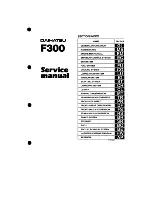
INTRODUCTION
PRELIMINAR STUDIES AND CONSIDERATIONS
MAINTENANCE AND DAMAGE PREVENTION
WORK ON BASIC VEHICLE
MOUNTING AND CONSTRUCTION
POWER TAKE-OFF
ELECTRIC AND ELECTRONIC SYSTEMS
APPENDIX
48
Body Builder Manual Part II, Specific Book LCV
V1.0, February 2015
4.1.2
Drilling work
A number of rules must be followed when performing drilling work on the chassis,
since the holes made in the beams and cross-members produce a reduction in their
sections, and this can lead to fractures and weakness of the chassis structure.
On the chassis beams there are generally some holes that are made in the factory.
It is not possible to use these holes to fix some groups or new elements. It is nec
-
essary to drill the chassis when additional holes are required. In these cases, the fol
-
lowing guidelines must be followed:
- Drilling holes in the upper or lower flanges of the beams is not allowed, neither
it the enlargement of holes that are made in the factory, as these areas are
considered as high stress concentration, and the structure might weaken.
- Do not make holes in areas where there are stiffeners or cross-members.
- Do not drill in areas subjected to point loads, such as spring brackets, or where
important elements of the vehicle chassis are installed.
- The exception to this rule is that holes may be made in the flanges of the
beams in the vicinity of the rear overhang, where the loads are lower and do
not affect the useful life of the chassis frame.
- No drilling is permitted in the A- or B-pillars of the vehicle.
- Drilling in the vicinity of the airbag system is prohibited.
- Whenever holes are made, certain minimum dimensions must be respected, in
order to avoid stress concentrations on the chassis elements. A reinforcement
piece should also be welded, in order to strengthen the beam in this area.
Fig. 4-34 LCV_SPBGC Drilling work in a beam - dimensions to be considered
R
Bushes
X
≥ 50 mm
Z
≥ 25 mm
Ø
use proper bushes
View direction
















































